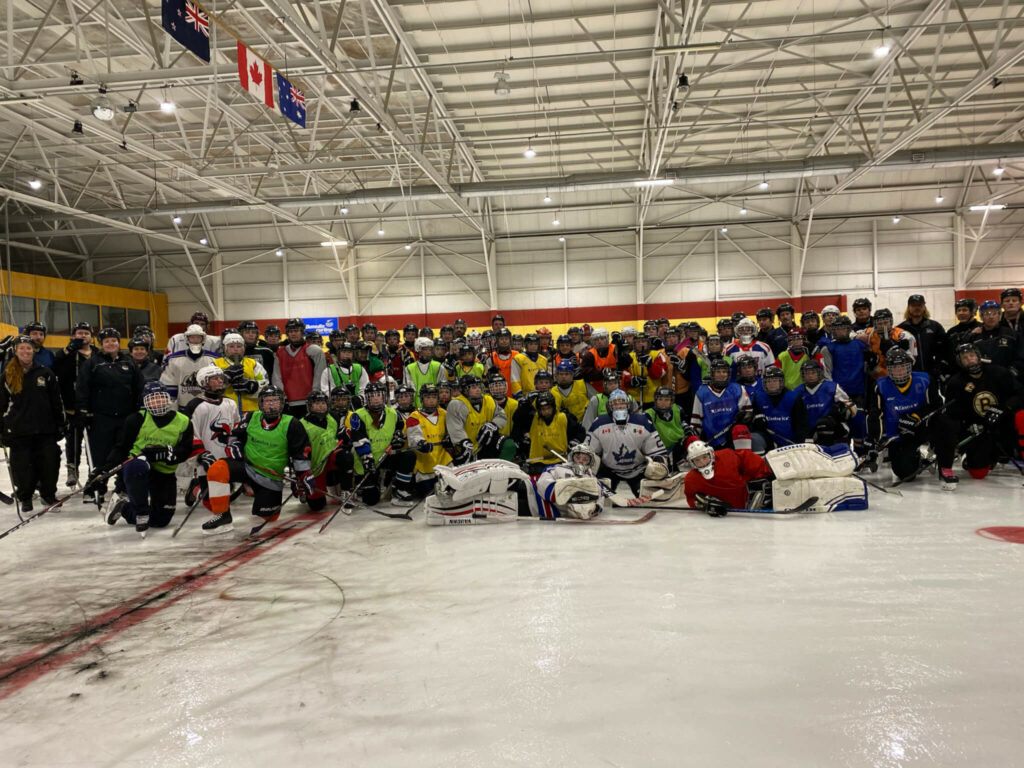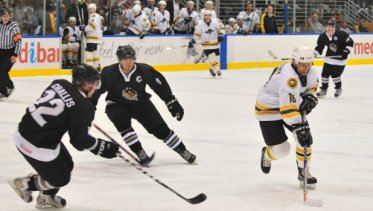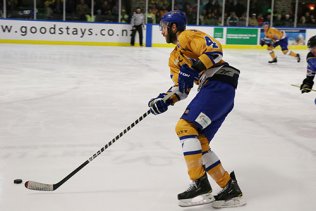
THE FINAL EPISODE – PART 3 OF THE CENTRE ICE STORY
In June, we explored the origins and beginnings of Centre Ice, as well as the Blong family and how they became synonymous with ice hockey in New Zealand. Last month, we took a look at Centre Ice as it operates today, and how Darren (its owner) is still heavily involved in the sport and helping the development of the future generations of Kiwi hockey players. For Part 3 of our three-part series, we’re looking at what the future looks like for both Centre Ice and ice hockey in New Zealand, and why we’re in such good hands.
It’s taken a number of years for ice hockey to find its feet in New Zealand, but the indicators for the future are positive and the sport is heading in a direction that should excite and encourage both little ones and those who have been around for years.
From learn-to-play programmes, through to age-group development, and eventually the national team, the sport is trying to create a pathway that puts more people in skates for longer. While we’ve spent the last few months looking at the past and what’s happening right now, this month we’re taking a look at what the future of the game is and what we still have to get right if we want to progress.

July 31st Dunedin Development Camp 75 + players 10 Goalies, 30 coaches attended
THE FUTURE OF DEVELOPMENT
Ice hockey in New Zealand has come leaps and bounds with its unity in the past few years. There have always been some great individuals doing things revolving around the sport in the country, but now the collective environment is beginning to flourish which means the game itself developing everywhere – not just in one or two pockets. But while we’ve become more cohesive as a sport geographically, it’s time to try and link our hockey players through age and allow the entire development pathway to blend into one.
“Obviously the goal is to have young skaters move into development programmes but there is no reason why national teams can’t invite age groups together,” Darren said. “For example, the Ice Blacks could train with the under-20s team at times and do domestic development camps. This will bridge the gap between age levels and so young guys and girls don’t get such a shock when they move up an age group or go to the next level. “Once we’ve got that sort of stuff in place, we will then have a full pathway for a kid from 10 through to 30+.” But it doesn’t stop there. NZIHFs philosophy is Hockey for Life, from your first shift at 6yrs to your last at 65+ yrs. This bodes well with a broad focus on developing all players. “If they’re playing hockey club, beer league or national teams we’ve done our job well”
Coupled with that, Darren thinks it’s very important to foster a strong sense of pride in the national teams and with linking young hockey players to their role models, and great to see current national team players Grace Harrison and Paris Hyde taking part in important roles in the youth development camps. “It’d be great if, in every area, the people who are in the Ice Blacks or Ice Ferns system go out and see the kids and wear the jersey, even if it’s just one session every now and then.
“It’s really important that the young ones are somehow connected to their role models like the Ice Blacks and Ice Ferns because that gets them excited about the game and excited about trying to achieve that one day.” If we can have a coherent pathway from when a kid first gets into skates, all the way through to potentially playing for the national team, we’ll become very efficient at developing good hockey players, as well as good coaches and good national teams.

CENTRE ICE
As highlighted in last month’s article, Centre Ice has grown into one of the most trusted sources for ice hockey equipment in New Zealand.
With an increasingly demanding and competitive online industry, as well as the challenge of being in a small market, Centre Ice has thrived and carved out a niche in what is a very passionate community. But room for growth is limited because a sport can only have so many players. That’s OK for owner Darren Blong who thinks that it’s more important that they’re actively helping the hockey community, than trying to utilise it. “I think the biggest thing for us is that we’re not super ‘in your face’,” Darren said. “We prefer to think ourselves in terms of if someone needs a haircut – metaphorically – they come to us for the haircut.
“What’s of more value to us is like the stuff we do with the Auckland Super League, where we’ve got 80 kids on the ice and we sponsor the player of the day, and have our banner up for photos. “It’s more about us being involved and out there in the community rather than it just being out-and-out promotion. And at the end of the day, it’s about us giving what we can to youth hockey stuff because it’s so important to get them connected and to keep them as hockey players.”So, while growing the business is important for Darren, the focus is more on what they can do outside of the shop front.

CONCLUSION
Over the past three months, we’ve tried to take you on a journey to show you, the reader, that Centre Ice is more than just selling hockey equipment or making money. We’re passionate about hockey, but it’s so much more than that. We’re passionate about growing the game, developing the next generation, keeping people in the sport, and making sure everyone who experiences the game comes away loving it.
From humble beginnings, where Ross Blong went out on a limb and moved from the farm to the ice rinks all those years ago, to son Darren taking over the equipment shop, becoming an Ice Blacks’ stalwart, and now becoming the national coaching coordinator, it’s been a journey not just for the Blongs, but for ice hockey as a sport.
Now, the game is heading in the right direction and the future is exciting. We may not turn out to be the next Canada or the United States, but we’ll have a pretty damn good version of New Zealand.




